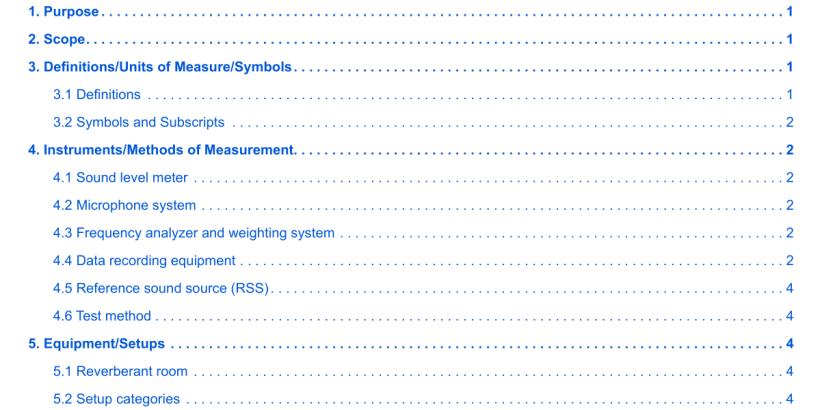ANSI AMCA 300-2014 pdf download.Reverberant Room Method for Sound Testing of Fans
5.4 Mounting methods
The method of mounting a test subject, connecting it to a non-integral driver or connecting it to an airfow test facility is not specifed. Any conventional method may be used, includ- ing vibration isolation devices and short fexible connectors. Other than these, sound and vibration absorptive material may not be incorporated in the test subject unless it is a standard part of the fan. Ducts shall be of metal or other rigid, dense, non-absorptive material and have no exposed sound absorption material on the interior or exterior surfaces. The driving motor and drive, when not an integral part of the test subject, may be damped or enclosed in any manner that does not expose sound absorption material to the test room. When a driving motor and drive are an integral part of the test subject, they may not be treated in any manner, and normal belt tensions, bearings and lubricants shall be used. When a fan and its drive are both in the reverberant room, the test results may contain sound contributions from fanking paths as well as mechanical and/or electrical sound from the drive system.
5.5 Duct length
On a chamber or two-room setup, the length of duct shall be consistent with the acceptable practice per ANSI/AMCA Standard 210 necessary to accurately establish the point of rating. The length of duct shown in Figures 2 and 3 is consistent with the procedures of ANSI/AMCA Standard 210. Care must be exercised to ensure that no duct resonances exist in close proximity to specifc frequencies of interest such as the blade passage frequency.
5.7 Calibration of system
Before each sound power determination, the following calibration checks shall be performed. A calibration check shall be made of the entire measurement system at one or more frequencies within the frequency range of interest. An acoustical calibrator conforming to ANSI S1.40 [8] and with an accuracy of ± 0.5 dB shall be used for this purpose. In conformance with ANSI S1.40, the calibrator shall be checked at least once every year to verify that its output has not changed. In addition, an electrical calibration of the instrumentation over the entire frequency range of interest shall be performed periodically, at intervals of not more than one year. The microphone and its associated cable shall be chosen so that their sensitivity does not change by more than 0.2 dB over the temperature range encountered during the measurement. If the microphone is moved, care shall be exercised to avoid introducing acoustical or electrical noise (for example, from gears, fexing cables or sliding contacts) that could interfere with measurement.
6.1.1 Point of operation
Although the acoustical observations necessary to deter- mine sound power are the same for all types of fans, the non-acoustical observations necessary to determine the aerodynamic point of operation differ. This standard provides different test setups for the testing of various fan types. Regardless of the test setup, the point of operation shall be determined. If the sound test setup also conforms to one of the test setups in ANSI/AMCA Standard 210, then the point of rating can be established with suffcient accuracy. If the sound test setup does not conform to one of the test setups in ANSI/AMCA Standard 210, steps must be taken to ensure that the fan rotational speed is known within ± 1% and the point of operation can be established within ± 5% along a system curve.
The observed RSS or test subject sound pressure levels include both the sound source and background noise. The effect of background noise level is termed background correction and must be subtracted from the observed sound pressure level. Background correction values depend on the difference between the observed sound pressure levels and the background noise levels.ANSI AMCA 300-2014 pdf download
